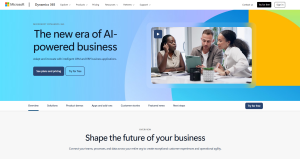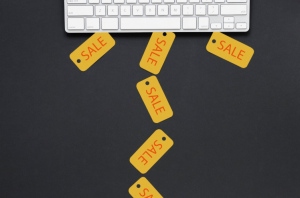Every lost customer, contributing to customer churn, costs your business 5-25 times more than the cost of a new one. This isn’t just a statistic—it’s a cost effective financial wound that keeps bleeding until you apply the right pressure.
In 2025, customer retention has transformed from a nice-to-have into the backbone of sustainable business growth, leading companies to find ways to improve customer retention. Companies that increase customer retention rates by just 5% typically increase profits by 25-95%. Yet most businesses continue pouring resources into customer acquisition while their existing customers slip away unnoticed.
Why? Because keeping customers is harder than attracting them. It requires understanding human psychology, building meaningful relationships, and delivering consistent value over time to ensure meeting customer expectations .
The secret isn’t complicated marketing tactics or expensive technology; it’s about understanding customer value and building systems that deliver it repeatedly. It’s about understanding what your customers truly value and building systems that deliver it repeatedly, ultimately driving customer satisfaction.
Is your business missing opportunities to keep valuable customers and meet their customer expectations? Are you guessing at retention strategies instead of exceeding customer expectations and addressing the needs of unhappy customers. And implementing proven models?
In this guide, I’ll share simple customer retention techniques and real-world examples you can actually use in your business—regardless of your industry, size, or budget. These aren’t theoretical frameworks; they’re battle-tested methods that have generated millions in retained revenue.
We’ll examine specific case studies, step-by-step implementation plans, and common pitfalls to avoid. By the end, you’ll have concrete customer retention examples that you can implement immediately to transform casual customers into loyal advocates throughout the customer journey.

Save 80% of delivery management time
We handle everything:
- Dedicated operations manager
- Real-time tracking dashboard
- Automated customer notifications
- Urgent issue resolution
Effective Customer Loyalty Program and Customer Retention
Building strong client loyalty requires clear goals, personalized communication, and meaningful rewards.
Strategic customer retention efforts can increase customer lifetime value by 25-95%
Well-executed loyalty programs result in both higher spending and stronger brand advocacy.
Step 1: Define Your Existing Customer Retention Objectives
Setting clear objectives is the first critical step in any successful customer retention tactic. Starting with measurable goals gives your team direction and helps measure customer retention effectively, tracking the customer retention rate while tracking progress. Most businesses should focus on three key metrics, which are key customer retention metrics: customer retention rate (percentage of customers who stay over time), churn rate (percentage who leave), and customer lifetime value (total revenue expected from a customer).
Research from Harvard Business School shows that increasing customer retention rates by just 5% can boost profits by 25% to 95%. This happens because returning customers tend to spend more and cost less to serve. When defining your objectives, look at your current metrics and set realistic improvement targets based on your industry benchmarks. For example, subscription businesses typically aim for reducing customer churn with monthly churn rates below 5%, while retail businesses might focus on repeat purchase rates.
The most effective approach is to make these metrics visible throughout your organization. When everyone from customer service to product development understands retention goals, they align their work accordingly. It is better to create dashboards that update in real-time and schedule regular reviews to adjust strategies based on performance. This creates accountability and helps identify which retention efforts are working.
Step 2: Build a Personalized Communication Plan For Customer Satisfaction
Personalized communication forms the foundation of customer loyalty. Gone are the days of generic mass messages. Today’s valued customers expect great customer service from businesses that understand their specific needs and preferences. The first step is segmenting your customer base into meaningful groups based on purchasing behavior, demographics, or engagement patterns.
“Customer retention must be your top priority. Why? Downloads don’t drive growth. Good customer retention improves everything from engagement to revenue,” notes Brian Balfour. This retention-focused mindset requires understanding exactly who your customers are and what communications will resonate with them.
Effective segmentation allows for targeted messaging that feels relevant to each customer group. A study by Campaign Monitor found that segmented email campaigns produce 760% more revenue than one-size-fits-all campaigns. For example, you might create different communication streams for new customers (onboarding guidance), regular customers (usage tips), and at-risk customers (re-engagement offers).
Beyond email, consider building personalized touchpoints across multiple channels. This might include in-app notifications, SMS messages for time-sensitive information, or even personalized sections on your website. The timing of communications matters as much as the content—analyze customer behavior patterns to identify when each segment is most receptive to messages.
Implementing Feedback Loops
Within your communication plan, establish regular opportunities for customers to provide feedback. These feedback loops serve two purposes: they give customers a voice (increasing their emotional investment), and they provide valuable insights for improving your products or services.
When collecting feedback, you should make sure to close the loop by acknowledging customers’ input and sharing how you’ve used it. This demonstrates that you value their opinions and builds trust in the relationship. Companies that excel at this often see higher Net Promoter Scores and stronger customer advocacy.
Step 3: Implement a Reward System
A well-designed reward system gives customers clear reasons to stay loyal and rewards customers for their loyalty. Effective loyalty programs don’t just offer discounts—they create emotional connections and provide genuine value. According to research from Accenture, members of loyalty programs generate 12-18% more revenue for businesses than non-members.
The foundation of any reward system is understanding what your customers truly value. For some customer bases, exclusive access or early product releases might be more motivating than financial incentives. For others, point systems that provide a sense of achievement and progress work well. The 2020 Loyalty Summary Report notes that “A loyal customer doesn’t consider alternatives. He won’t mind paying a premium for his valued loyalty. A repeat customer will consider options.”
Tiered reward programs have proven especially effective for encouraging ongoing engagement. By creating different status levels (like silver, gold, and platinum membership tiers), you tap into customers’ desire for status and recognition, ultimately building a loyal customer base. Each tier should offer progressively better benefits to repeat customers, giving them something to work toward. Companies like Sephora have mastered this approach with their Beauty Insider program, where higher tiers receive better rewards, exclusive events, and personalized experiences.
For maximum impact, make your reward system easy to understand and use. Complex point calculations or redemption processes create friction that reduces participation. Explain the benefits clearly, make rewards attainable, and regularly remind customers about their progress and available benefits. Digital wallets or mobile apps can simplify the process while keeping your brand top of mind.
A real-world example of effective customer retention comes from eyewear company Warby Parker. When customers haven’t purchased in some time, Warby Parker sends a personalized email with new frame recommendations based on previous purchases. They also include a reminder about their home try-on program, reducing barriers to repurchase. This approach combines personalized communication with practical value, addressing common concerns that might prevent customers from returning.
Another excellent example is how American Express retains customers through its concierge service. When cardholders need restaurant reservations, travel arrangements, or event tickets, American Express provides personalized assistance. This value-added service makes the annual membership fee seem worthwhile and creates emotional loyalty beyond the card’s financial benefits.
The processes successful companies use to retain customers typically follow a consistent pattern: they collect and analyze customer data, identify points where customers might leave, create intervention strategies for those moments, and continuously test and refine their approaches. This systematic method turns retention from a reactive effort into a proactive strategy.
Real-Life Customer Retention Rate Case Studies
These case studies show how companies achieved 15-40% better retention with specific strategies.
Each customer retention example provides practical, tested methods you can adapt to your business.
Learn from both B2B and B2C successes across retail, tech, and service industries.
Case Study 1: How a Retailer Improved Retention with Personalized Emails
When national clothing retailer FullStyle noticed their customer return rate dropping in early 2024, they took immediate action. Their data team discovered an alarming trend: 63% of first-time buyers never made a second purchase. The company was essentially losing customers despite strong initial acquisition numbers.
What made this case remarkable was FullStyle’s methodical approach. First, they analyzed purchase history data to identify patterns in customer behavior. Second, they segmented customers, including first-time customers, based on purchase frequency, product categories, and average order value. Finally, they created personalized email sequences that spoke directly to each customer’s preferences rather than generic promotional blasts.
The results were striking. Within six months, FullStyle saw first-time buyer retention jump from 37% to 58%. Their overall customer lifetime value increased by 25%, and their email open rates doubled. The personalized approach worked because customers received product recommendations that matched their style preferences, creating a sense that the company understood their individual needs, which helped to improve customer retention.
Key Implementation Details
The technical side of FullStyle’s approach deserves attention. They used a combination of purchase history, browsing behavior, and survey data to build customer profiles. The email system automatically generated personalized subject lines referring to previously purchased items or viewed categories. Most importantly, they included personalized discounts on complementary items to what customers had already purchased, not just random promotions.
Case Study 2: Tech Company’s Success with Feedback Loops
ZoomInfo, a SaaS company selling database access to recruiting, sales, and marketing teams, achieved an impressive 98.5% retention rate through a structured feedback system. Their approach focused on preventing customer issues before they led to cancellations.
The company implemented quarterly review sessions with clients as part of their customer retention program to discuss usage patterns, challenges, and potential improvements. These weren’t just courtesy calls—they were structured conversations with specific goals. Each session included reviewing actual platform usage data, comparing it to industry benchmarks, and identifying underutilized features that could provide additional value.
What set ZoomInfo’s approach apart was how they acted on feedback. Each customer insight was tagged, categorized, and entered into a central database. Product teams received weekly reports of common issues, and the development roadmap was adjusted quarterly based on customer feedback trends. This closed-loop system showed customers that their input directly influenced product development, thus effectively addressing potential customer complaints.
Case Study 3: Manufacturing Firm’s Proactive Service Model
Hudson Manufacturing, a mid-sized industrial equipment provider, transformed their customer retention by completely rethinking their service model. Previously operating on a reactive basis—waiting for customers to report problems—they shifted to a proactive approach focused on keeping existing customers engaged and data-driven.
The company installed monitoring sensors on equipment sold to customers, allowing them to track performance metrics remotely. This data was analyzed using predictive algorithms to identify potential failures before they occurred. When the system detected abnormal patterns, it automatically triggered a service visit proposal to the client.
This approach created several positive outcomes. First, customers experienced 68% fewer emergency breakdowns, saving them costly production downtime. Second, the company’s service team could schedule maintenance visits during slower periods rather than responding to emergency calls. Third, the data collected allowed Hudson to identify common failure points and improve future product designs.
The customer retention impact was significant. Contract renewal rates increased from 76% to 91%, and the average contract value grew by 22% as customers added premium service packages. The company positioned itself as a partner in production efficiency rather than just an equipment vendor, working actively to keep customers happy.
Case Study 4: Subscription Service’s Flexible Cancellation Policy
CounterPoint Analytics, a market research firm offering subscription-based data services, took a bold approach to customer retention by making it easier for customers to leave. While this might seem counterintuitive, their “flexible cancellation” policy was a key part of their customer retention plan that ultimately improved retention rates by 32%.
Before implementing this strategy, CounterPoint required 90-day cancellation notices and charged early termination fees. Customer exit interviews revealed widespread frustration with these policies, and many former clients advised peers against signing up due to the difficult exit process.
The company replaced this approach with a customer retention plan that included a 30-day notice policy, eliminated termination fees, and—most importantly—implemented a structured “pause” option allowing customers to temporarily suspend service during budget constraints. They also created a detailed exit interview process to understand cancellation reasons.
Case Study 5: Financial Services’ Education-Based Customer Retention Strategy
Peak Financial Advisors faced a common industry challenge: client retention during market downturns. When markets fell in late 2023, they noticed a concerning pattern of clients withdrawing funds and closing accounts, often making emotional decisions during volatile periods, which impacted customer interactions.
The firm developed a comprehensive education program centered on market volatility. This included monthly webinars on economic trends, personalized portfolio reviews comparing current performance to historical patterns, and a customer retention program newsletter highlighting long-term investment principles. Crucially, all communications focused on education rather than sales or customer retention tactics.
This education-based approach yielded impressive results. During the 2024 market correction, Peak experienced 76% fewer account closures than during similar market conditions in 2023. Client surveys showed a 48% increase in confidence about their investment strategy, and 83% reported beta ter understanding of market volatility. The education program also led to unexpected growth—clients who participated in educational sessions were 3.2 times more likely to refer new clients, thus increasing their customer lifetime value clv .
Lessons From Successful Customer Retention Examples and Case Studies
Analyzing these diverse case studies reveals several common factors that contribute to successful customer retention. First, companies that collect and analyze customer data systematically gain crucial insights that guide their retention strategies. Without this foundation, retention efforts remain generic and less effective.
Second, successful companies don’t merely collect feedback—they act on it in visible ways. When customers see their input directly influencing products or services, they develop stronger brand loyalty. This creates a virtuous cycle where feedback improves offerings, increasing satisfaction and encouraging more constructive feedback.
Third, educational approaches consistently outperform pure promotional tactics for long-term customer retention. Companies that help customers become more knowledgeable and successful in their field create deeper relationships that withstand competitive pressures and economic fluctuations.
Finally, flexibility in customer relationships—whether through paused subscriptions, adaptable service models, or personalized options—builds goodwill that translates to loyalty within your overall business model. The rigid contracts and policies that many companies believe protect revenue often have the opposite effect by creating resentment and discouraging the retention of customers, ultimately making it harder to increase customer retention and encouraging them to seek alternatives.
For businesses looking to improve their attention rates, these case studies offer valuable blueprints that can be adapted across industries. The U.S. brands lose an estimated $168 billion annually due to customer attrition, highlighting the enormous financial opportunity in improving customer retention strategies through these proven approaches and reducing customer acquisition costs.
Innovative Customer Retention Tactics for Businesses
Advanced customer retention now requires both the human touch and tech tools.
Tailored experiences keep customers from leaving
Data-driven strategies create stronger customer bonds
Advanced Techniques for Increasing Customer Retention
Subscription models have changed how companies think about customer relationships. The shift from one-time purchases to ongoing relationships has forced businesses to rethink how they deliver value. Research from McKinsey shows that subscription businesses grow revenue nearly 5 times faster than S&P 500 company revenues. This growth comes from the stable, recurring revenue that subscription models provide.
The key to successful subscription models is to offer clear value that increases over time. Grammarly does this well by starting users with a free tier that demonstrates immediate value, then incrementally revealing premium features that solve deeper problems based on past purchases. Their approach has earned them over 30 million daily active users. The psychological principle at work is the “endowment effect” – once customers start using a service, they value it more highly and become reluctant to give it up.
Flexible cancellation policies might seem counterintuitive, but they improve retention. Netflix allows subscribers to cancel anytime, yet maintains one of the industry’s lowest churn rates at approximately 2.4%. When customers know they can leave easily, paradoxically, they often choose to stay. This approach builds trust and reduces the pressure that might otherwise push hesitant customers away. It’s what psychologists call “reactance theory” – when people feel their freedom might be restricted, they resist more strongly.
Creating Value-Based Retention Programs For Better Customer Interactions
Value-based customer retention programs focus on solving customers’ problems to create satisfied customers rather than simply offering discounts, which can be enhanced through referral and loyalty programs. Adobe Creative Cloud exemplifies this approach by continually adding new features and tools that increase the value proposition for subscribers. Their retention strategy centers on making their products increasingly essential to users’ workflows.
Companies that excel at retention often create membership programs that transcend traditional loyalty points, ultimately benefiting their most loyal customers. REI’s Co-op membership model gives customers a sense of ownership and community that goes beyond transactions while also aiming to reward repeat customers. Members receive not just discounts but voting rights and dividend returns, creating multiple commitment layers that make leaving less likely and encourage repeat purchases.
Integrating Technology for Better Customer Experience
Predictive AI has transformed from a novelty to a necessity in customer retention. By analyzing past behavior patterns, AI can identify customers at risk of churning before they take action. Companies using predictive AI for retention have seen churn reductions of 10-30% according to Forrester Research. The technology works by spotting subtle changes in engagement, purchase frequency, or support interactions that humans might miss.
Spotify exemplifies effective AI-driven retention. Their recommendation engine analyzes listening patterns to create personalized playlists like Discover Weekly, which keeps users engaged through constant content discovery. This personalization creates what psychologists call the “IKEA effect” – when customers help create their experience, they value it more highly.
Beyond predictions, AI enables proactive service interventions. American Express uses AI to detect unusual spending patterns and proactively contact customers, preventing frustration before it occurs. This approach transforms potential negative experiences into moments that build trust and loyalty.
Chatbots have evolved from simple FAQ responders to sophisticated retention tools. Modern AI-powered conversational agents can resolve up to 80% of routine customer inquiries without human intervention, according to IBM research. This immediate response satisfies customers’ growing expectations for instant service. More importantly, advanced chatbots can identify emotional cues in conversations and escalate to human agents when needed, preventing frustration that might lead to churn.
Properly implemented chatbots can also help collect customer feedback, creating what researchers call “friction-free” experiences, moving obstacles that might cause customers to reconsider their relationship with a brand. Intercom’s bot-human hybrid approach allows seamless transfers between automated and human support, maintaining context throughout the conversation.
Building Community-Based Customer Retention Examples
Community building creates emotional bonds that transcend transactional relationships. Peloton’s success comes largely from creating a vibrant community around their products. Their user-led groups, instructor-follower relationships, and milestone celebrations transform an exercise bike purchase into membership in a fitness movement. This community creates what sociologists call “social switching costs” – the emotional price of leaving becomes too high.
The most effective community strategies happen in structured environments where customers can learn from each other. Salesforce’s Trailblazer Community offers forums, events, and knowledge-sharing opportunities that help customers maximize their software investment. This peer learning creates a network effect where the platform becomes more valuable as more people participate.
Implementing Strategic Community Management
Effective community management requires consistent moderation, regular content seeding, and rapid response to questions related to customer accounts. Sephora’s Beauty Insider Community succeeds through dedicated community managers who facilitate discussions, highlight valuable contributions, and ensure a positive environment. Their approach has resulted in 30% higher purchase frequency among community participants.
The most valuable communities balance customer-to-customer interaction with brand participation. Too much brand control stifles authentic conversation; too little leaves the community without direction. Successful community managers act more as facilitators than controllers, allowing organic relationships to develop while gently guiding conversations toward productive outcomes that benefit the entire business model.
Leveraging Personalization Beyond Marketing
Advanced personalization moves beyond simply addressing customers by name. True personalization anticipates needs and tailors experiences throughout the entire customer journey. Amazon’s recommendation engine accounts for approximately 35% of this revenue by creating highly individualized shopping experiences based on browsing history, purchase patterns, and similar customer behaviors.
Effective personalization requires deep data integration across touchpoints. Starbucks’ mobile app exemplifies this approach, combining location data, purchase history, and time patterns to present relevant offers when they’re most likely to resonate. Their rewards program has over 24 million active users, partly because it creates highly individualized experiences that increase in relevance over time.
Creating Proactive Customer Success Programs
Proactive customer success programs identify potential problems before customers experience them. This approach shifts support from reactive problem-solving to preventative partnership. Salesforce pioneered this model by assigning customer success managers to proactively monitor account health, provide regular business reviews, and ensure customers achieve their goals with the platform.
Research from Gainsight shows that companies with mature customer success programs have 34% better retention rates than those without. The effectiveness comes from shifting the relationship dynamic – instead of waiting for customers to report problems, proactive success programs demonstrate ongoing value and commitment to customer outcomes.
Measuring Customer Success Program Effectiveness
Effective customer success programs require metrics beyond simple retention rates. Leading indicators include product adoption rates, feature usage trends, and customer health scores based on engagement patterns. Gainsight’s customer success platform combines these metrics into composite health scores that predict renewal likelihood 6-12 months before contract dates.
Implementing Feedback-Driven Product Evolution
Products that evolve based on customer feedback create natural customer retention hooks. Customers who see their suggestions implemented become invested in the product’s success and are likely to leave unless you enhance customer loyalty. Project management platform Asana attributes much of their 98% satisfaction rate to their feedback-driven development process, which includes regular user testing sessions and a transparent product roadmap influenced by customer input.
The most effective feedback systems go beyond collecting information to closing the loop when changes are made. When customers see their feedback implemented, it creates what psychologists call “co-creation commitment” – they become partial owners of the solution rather than just users, which significantly enhances customer loyalty. This ownership mentality significantly increases switching costs.
Slack exemplifies this approach with their feedback-driven evolution. Their platform includes an integrated feedback mechanism that makes suggestion submission frictionless. More importantly, they regularly communicate which features came from user suggestions, reinforcing the value of participation and creating community recognition for contributors.
Retain Customers’ Lifetime Value (CLV) for Your Business

As 2025 unfolds, customer retention remains the backbone of sustainable business growth. By following defined objectives, creating personalized communication plans, and implementing reward systems, you can build relationships that last. The customer retention examples we’ve explored show that listening to customers and acting on their feedback provides examples of customer retention that directly impact your bottom line.
Remember that customer retention isn’t static—it requires continuous adaptation. Whether you’re implementing AI tools for better customer insights or training your team on new service approaches, consistency is key. The most successful businesses combine data analytics with genuine human connection.
Avoid common pitfalls like over-promising or neglecting regular follow-ups. Instead, focus on building a community around your brand and addressing issues promptly when they arise.
Your customer retention tactic doesn’t need to be complex to be effective. You can start with one technique from this guide—perhaps segmenting your customer base or implementing a simple loyalty program—and build from there.
What customer retention example will you implement first in your business? The sooner you begin, the sooner you’ll see results that translate to loyal customers and sustainable growth.



























